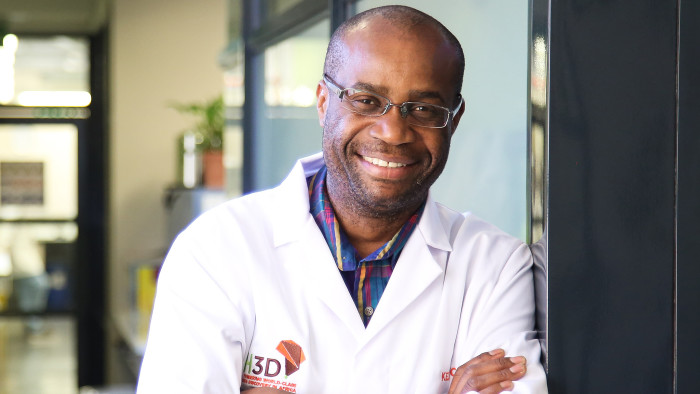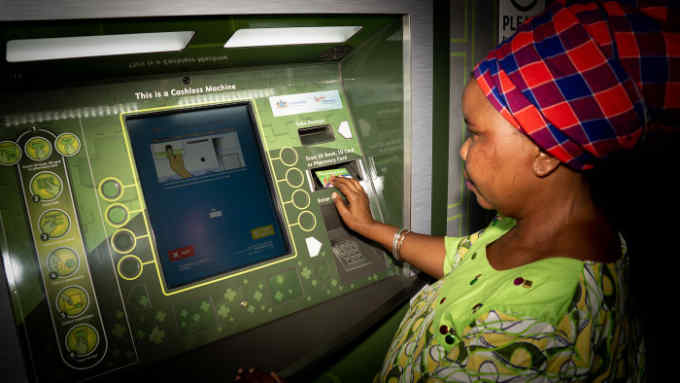South Africa ‘frontier vibe’ still drives advances

Roula Khalaf, Editor of the FT, selects her favourite stories in this weekly newsletter.
In 1986, the late PW Botha, then president of South Africa, revealed the toll that the international oil embargo was taking on his pariah state. “There were times,” he told the Windhoek Advertiser, “that we had enough oil for only one week.”
If necessity is the mother of invention, the isolation of apartheid South Africa had an unintended consequence: it spurred innovation.
The oil embargo encouraged Sasol, a domestic company formed in 1950, to commercialise its pioneering coal-to-liquids technology, itself built on work conducted by German scientists during the second world war. The Fischer-Tropsch process, which Sasol honed to a fine art, enabled the country to survive sanctions by extracting fuel, naphtha, paraffin and a range of chemicals from coal.
Today, this and similar technology is used not only domestically but in countries as far afield as Nigeria, Qatar and Uzbekistan. During the cold war, cut off from international suppliers, South Africa also built a sophisticated aerospace and defence industry, even developing a nuclear weapons programme.
Those technological breakthroughs were part of what Alison Lewis, dean of the faculty of engineering at the University of Cape Town, calls a “frontier” mentality. “Under apartheid, there was a sense of ‘the world’s not going to help us. We’re just going to do our own thing’,” she says. “It’s controversial because it was the white Afrikaners who were doing the innovation.”
The challenge in post-apartheid South Africa has been to harness that pioneering spirit to the benefit of all South Africans, particularly the black majority, who were previously all but excluded from science and technology.
Using innovation as a tool to transform lives has been an explicit aim of the African National Congress. In a 1996 white paper, two years after it took office, the party laid out its vision. “The stimulation of a national system of innovation will be central to the empowerment of all South Africans as they seek to achieve social, political, economic and environmental goals.”
So how is it doing? The answer is that, although South Africa continues to produce significant work of scientific and practical merit, it could be performing even better. Despite significant advances, there are not enough black South Africans at the cutting edge of science and technology, and innovation is not marshalled sufficiently to provide employment or to solve many of the country’s deep-seated social and economic problems.
In government-dominated areas such as power generation, where Eskom, the public electricity utility, has leaned towards nuclear over solar, innovation may, if anything, have gone backwards. Technological advances in the mining sector have been hampered by unions’ demands to preserve jobs.
Nor has social innovation in areas such as city planning been obviously successful. Much of urban South Africa still suffers from the spatial segregation born of apartheid.
Still, Ivor Ichikowitz, founder of Paramount Group, a South African defence and aerospace company, says local engineers, scientists and businesses continue to break new ground. “The legacy from apartheid was this huge pool of human capital, which cost billions to develop over many, many, years,” he says. “Our universities and training centres continue to put out graduates who are more than capable of holding their own anywhere in the world.”

Mr Ichikowitz cites the contribution South Africans have made in fields as diverse as GSM cellular networks, satellites, hydroponics, nutrient management and the automotive and defence industries as evidence that “this innovation mindset is still extremely vibrant”.
Much of the work, however, happens outside the country because of a lack of opportunities at home, he says. “I’m afraid we’ve suffered a massive brain drain over the past 20 years, though there have been enough people left to continue innovation at home.”
Naledi Pandor, previously minister of science and technology and now minister of higher education under the new administration of President Cyril Ramaphosa, sees signs of an upward trend. “We have made a commitment that there will be an increase to the budget of research, science and technology — which at the moment is below 1 per cent of gross domestic product,” she says. The idea is to meet a longstanding spending target of 1.5 per cent of GDP.
Ms Pandor admits that schools are not teaching children well enough in mathematics and science. Indeed, the inability of the ANC to raise school standards for black pupils is widely considered a major failing of the post-apartheid era.
She does, however, point to projects such as the Square Kilometre Array radio telescope as proof of the government’s commitment to investment in science and its belief in the power of technology positively to influence society as a whole.
Under the giant astronomy project, projected to cost some $2bn, thousands of telescopes, located in both South Africa and Australia, would enable scientists to survey the sky faster and in greater detail than before. The enormous computing power mustered can already process big data in areas such as genomics and stock-trading algorithms.
Ms Pandor says the number of black postgraduates in science, engineering and technology has been rising steadily, though she regrets it is not always easy to retain people in the scientific system.
She says, however, that “we’ve grown our human capital and liberated science to focus on areas — including HIV and medical radioisotopes — of benefit to the broader population”. An example of homegrown innovation is H3D, a drug discovery unit at the University of Cape Town headed by Kelly Chibale, a professor in the chemistry department who escaped poverty in the Zambian copper belt to earn a PhD at Cambridge university in the UK and forge a pioneering career in medical innovation.
At UCT, Prof Chibale has marshalled public and private funding, including from Novartis, Celgene and the Bill & Melinda Gates Foundation, to create Africa’s first integrated drug discovery and development unit. In another African breakthrough, H3D put an antimalarial drug into Phase II clinical trials in 2017, in what Prof Chibale hopes will be the first of many medicines it can push towards regulatory approval.
“People don’t expect Africans to lead innovation in the health space,” he says. What he calls “Afro-pessimism” is, he adds, not only a perception of Africans by outsiders, but also one held by many Africans themselves.
“They can’t think that a guy like me from the townships and the villages of Zambia can lead international efforts and do something that is truly world class and innovative,” he says. “Our responsibility is not to argue with that. It is to say: ‘How do we change that perception by doing something?’ ”
A draft white paper on science, technology and innovation published last year, acknowledges the shortfalls. Since the first white paper of 1996, it says, there has “been a threefold increase in publications, significant growth in the participation of the black population and women in the research and development workforce and a rise in doctoral graduation rates.” However, innovation, measured in patents and products, has been “relatively flat”.
Prof Lewis at UCT says her students face an uphill battle in applying their skills to the new South Africa. “Every single example of a bridge they look at comes from San Francisco or the Netherlands, so you have absolutely no idea what being an African civil engineer might look like,” she says.
But she has not lost faith in the idea that South Africans have a strong innovative mindset. “I think that frontier vibe is very much alive and kicking.”

Comments